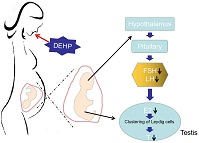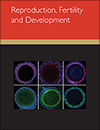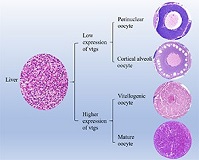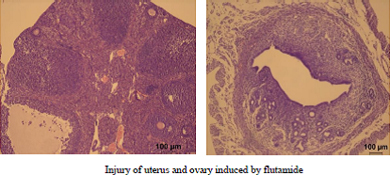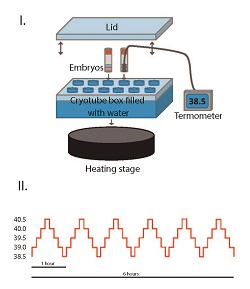Reproduction, Fertility and Development
Volume 33
Number 7 2021
Di-2-ethylhexyl phthalate (DEHP) is harmful to humans and rodents, with its toxicity in the reproductive system being the most serious. We found that exposure to DEHP at different life stages may produce different symptoms. It is necessary to further study the effects of DEHP.
Polycystic ovary syndrome (PCOS) is the most common cause of infertility; it is characterised by ovarian dysfunction and changes in follicle dynamics. There is evidence that low adiponectin may be responsible for the development of PCOS traits. Niacin can stimulate adiponectin secretion, and this study investigated the effects of niacin on PCOS characteristics. In a rat model of PCOS, niacin was found to relieve changes ovarian histological and follicle dynamics.
Egg maturation in oviparous animals involves a process called yolk synthesis or vitellogenesis and, as the precursor of yolk protein, vitellogenin is essential for vitellogenesis. This study revealed the oogenesis of Opsariichthys bidens and that the main source of vitellogenin is the liver: with increased transcription levels of vitellogenin genes in the liver, there is a gradual increase in yolk granules in oocytes. These findings will help us better understand the molecular mechanism of vitellogenesis.
Intrauterine exposure of mice to flutamide (an environmental endocrine disruptor (EED)) can damage the ovaries and uteri of the female offspring. The mechanism may involve triggering of the stress response in cells, inducing excessive cell death during this injury. The findings of this study will deepen our understanding of the damage caused by EEDs to the female reproductive system.
As one of the earliest domesticated ruminants, goats play an important role in Chinese culture and economy. In this study, a 20 bp deletion variant of PPP3CA had a remarkable influence on goat litter size. The findings indicated that PPP3CA plays a critical role in goat reproduction and that the mutation of this gene can be useful in marker-assisted selection.
When mothers are undernourished during pregnancy and lactation, the development of the testis of their male offspring is compromised, perhaps leading to poor fertility in adult life. We have shown that in the developing testis, maternal undernutrition modifies the production of transcription factors, heat shock proteins and apoptotic proteins. These factors are responsible for the balance between cell between proliferation and cell death that is essential for successful sperm production.
Heat stress negatively affects reproduction and ways to mitigate the effects are needed. Survival pathways can be activated to increase cell tolerance to elevated temperatures and we present a mild thermal treatment developed to induce protective mechanisms in embryos before exposure to heat stress conditions. Thermal treatment of embryos may be an interesting strategy to mitigate the effects of heat stress on reproduction.

